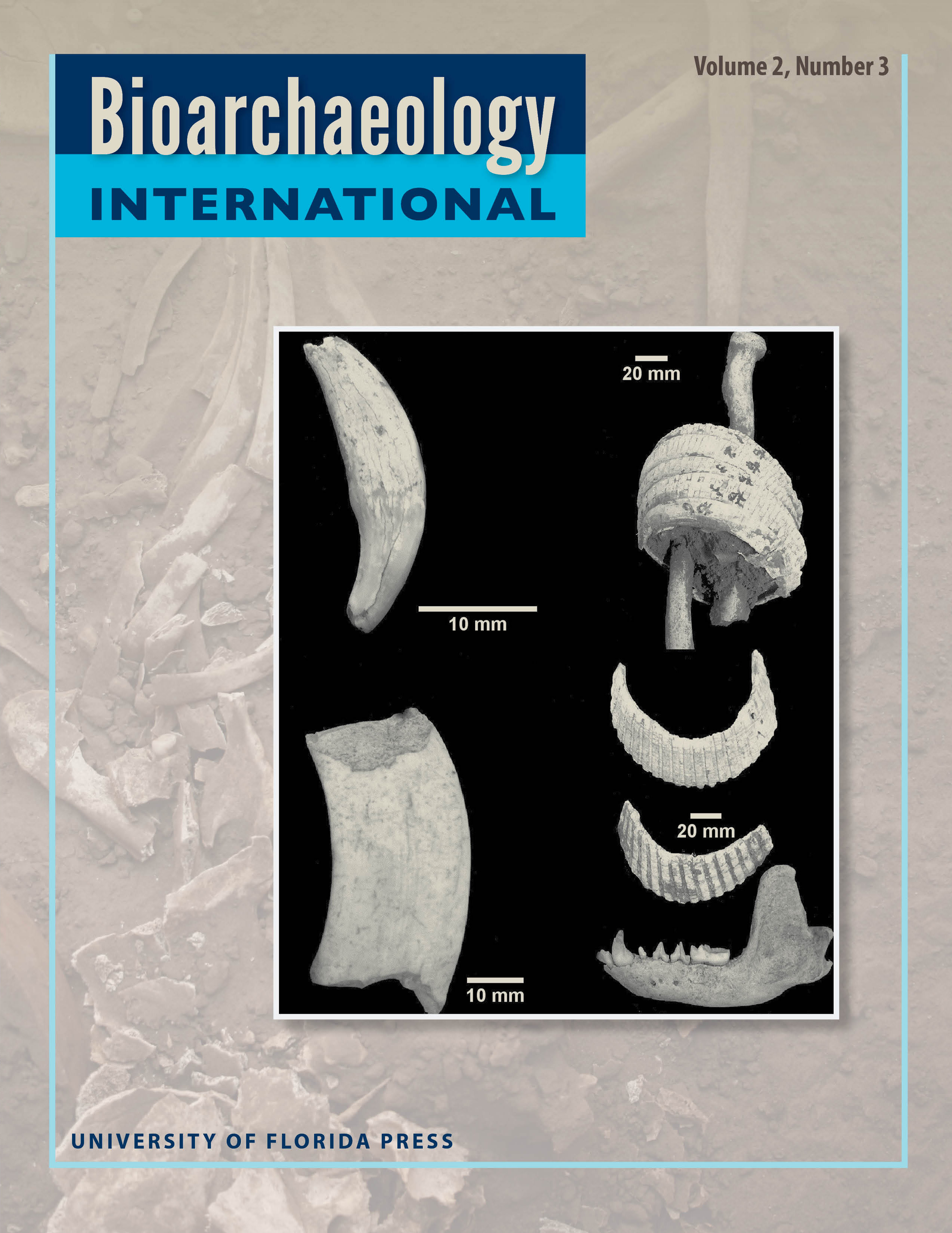Burying the Karrer: A Case Study Exploration of the Mercenary Regiment at the Eighteenth-Century Fortress of Louisbourg, Nova Scotia
Main Article Content
Abstract
Bioarchaeological research is built on a foundation of context and how social and historical considerations can aid us in better understanding the individual and society. Burial patterning and grave inclusions are significant contextual elements, as they may speak to individuality at complex and multifaceted cemetery sites. Established in 1713, the Fortress of Louisbourg was home to a mosaic of individuals during its 45-year history, including fishermen, merchants, soldiers, and civilians. This case study highlights Burial 5/2017, an adult male between 30 and 34 years of age, buried in the cemetery on Rochefort Point and excavated in 2017. Osteologically, there were no unique skeletal markers that could speak to who this individual may have been; however, the inclusion and careful recovery of three pewter buttons underneath the body hints to his membership in the Karrer (Swiss) regiment at the fortress. Corroborated by historical evidence and preliminary isotopic analysis, this case study highlights the importance of multiple methods of analysis when conducting bioarchaeological research and the possibility of identifying specific individuals within a seemingly homogenized cemetery population.
La recherche en bioarchaéologie est fondée sur le contexte et sur la façon dont les considérations sociales et historiques peuvent nous aider à mieux comprendre l’individu et la société. Les structures d’enterrement et les objets inclus dans les tombes sont des éléments contextuels importants, puisqu’ils peuvent exprimer l’individualité dans des sépultures complexes et multidimensionnelles. Établie en 1713, la forteresse de Louisbourg abritait une mosaïque d’individus, notamment des pêcheurs, des commerçants, des soldats et des civils, et ce, durant 45 ans. Cette étude de cas concerne la sépulture cinq (Burial 5), soit celle d’un homme adulte, âgé de 30 à 34 ans, inhumé dans le cimetière à la pointe Rochefort, et fouillée en 2017. Les résultats d’analyse ostéologique n’indiquent aucune anomalie squelettique qui pourrait révéler l’identité de cet individu. Toutefois, l’inclusion et la récupération soigneuse de trois boutons en étain sous le corps pointent vers son appartenance au régiment suisse de Karrer à la forteresse. Corroborée par les données historiques et une analyse isotopique préliminaire, cette étude de cas souligne l’importance d’avoir recours à de multiples méthodes d’analyse dans le cadre de recherches en bioarchaéologie, et la possibilité d’identifier des individus dans un cimetière dont la population est vraisemblablement homogénéisée

